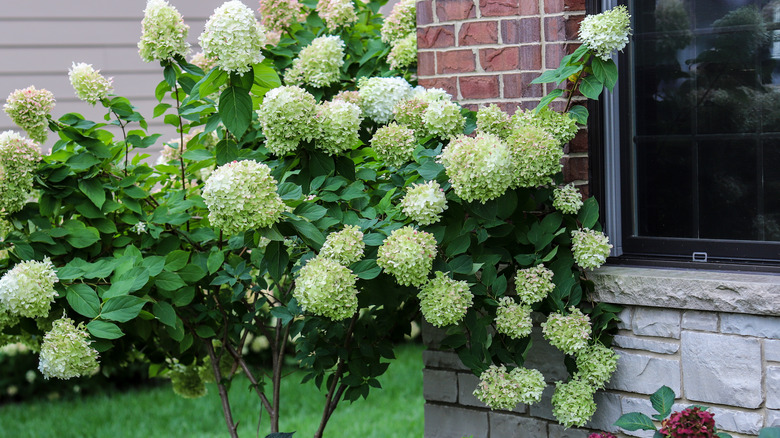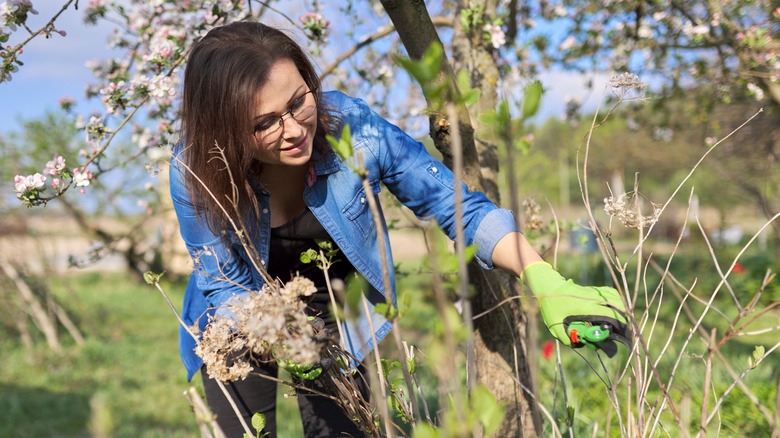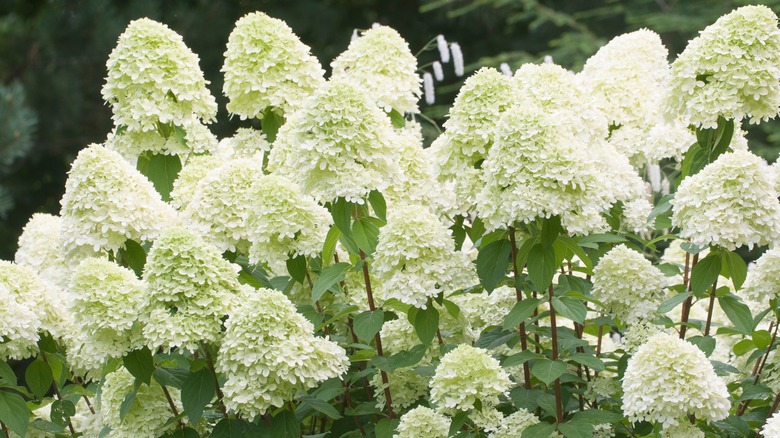How To Prune Your Hydrangea Tree So The Limelight Buds Don't Weigh It Down
To properly prune a Limelight hydrangea and prevent bud-laden limbs from drooping, there are certain steps gardeners should follow. Begin by observing the overall structure of the plant. Identify any dead, damaged, or weak limbs that need removal. Note where the heaviest bud clusters are located. Use clean and sharp pruning shears, first sterilizing them with rubbing alcohol to prevent the spread of disease. Focus on removing the oldest stems, starting from the base. Trim them back to the ground or to a healthy set of buds. This encourages new growth and prevents overcrowding.
To prevent limb drooping due to heavy bud clusters, selectively thin out some of the buds. Aim to maintain a balance between flowering and plant structure. Snip off excess buds near the end of each stem. When trimming stems, make clean cuts just above a pair of healthy buds or nodes. This will promote branching and discourage weak growth. While pruning, aim to maintain the natural shape of the plant. Avoid cutting too much from the top, as this can lead to imbalanced growth. Throughout the growing season, monitor the plant's growth and make occasional trims as needed to maintain shape and prevent overcrowding.
When to prune your Limelight hydrangea
The best time to prune a Limelight hydrangea is in late winter or early spring, while it's dormant. Look for signs that the tree is ready for pruning. For example, Limelight hydrangeas should be pruned between late February and early April, before new growth begins. This is when the plant's energy is focused on its root system. Check for early signs of bud swelling on the branches. This indicates that the plant is preparing for new growth. Pruning just before or during bud swelling ensures you're shaping the plant before new shoots emerge. During the dormant season, the plant should have little to no leaf growth. If you notice significant leafing out, wait until the next dormant period to prune. As the leaves have dropped during the winter, it's easier to see the plant's structure. This makes it simpler to identify dead or weak branches that need removal.
Conversely, you should be wary of signs that the tree is not ready for pruning. If the plant is actively growing, it's not the right time for pruning. Pruning during active growth stresses the plant and disrupts its development. It's best to wait until the true dormant period. If the plant has suffered frost damage, it's best to delay pruning until you can assess the extent of the damage and ensure the plant's health. By pruning at the right time and following proper techniques, you can help your Limelight hydrangea tree flourish.
More tips for maintaining a healthy Limelight hydrangea
Caring for a Limelight hydrangea tree involves proper watering, mulching, and fertilizing to ensure its health and vibrant growth. Hydrangea trees, especially during their establishment period, require consistent moisture. Water deeply and evenly, ensuring the soil remains consistently moist but not waterlogged. In hot weather, increase the frequency of watering to prevent drought stress. Use a soaker hose or drip system to deliver water directly to the root zone. Apply a layer of organic mulch around the base of the tree, maintaining a depth of 2 to 4 inches. Mulch helps retain soil moisture, suppresses weeds, and regulates soil temperature. That being said, keep the mulch a few inches away from the trunk to prevent rot.
Fertilize Limelight hydrangea trees in early spring, just as new growth begins and after any pruning. Use a balanced, slow-release granular fertilizer formulated for flowering shrubs or trees. Apply according to the manufacturer's instructions, distributing it evenly around the tree's drip line — the area beneath the outermost branches. Avoid over-fertilization, as excessive nitrogen can lead to lush foliage at the expense of blooms. By following these care guidelines, you can help your Limelight hydrangea tree flourish and produce its iconic cone-shaped flower clusters while maintaining overall health and vigor.


